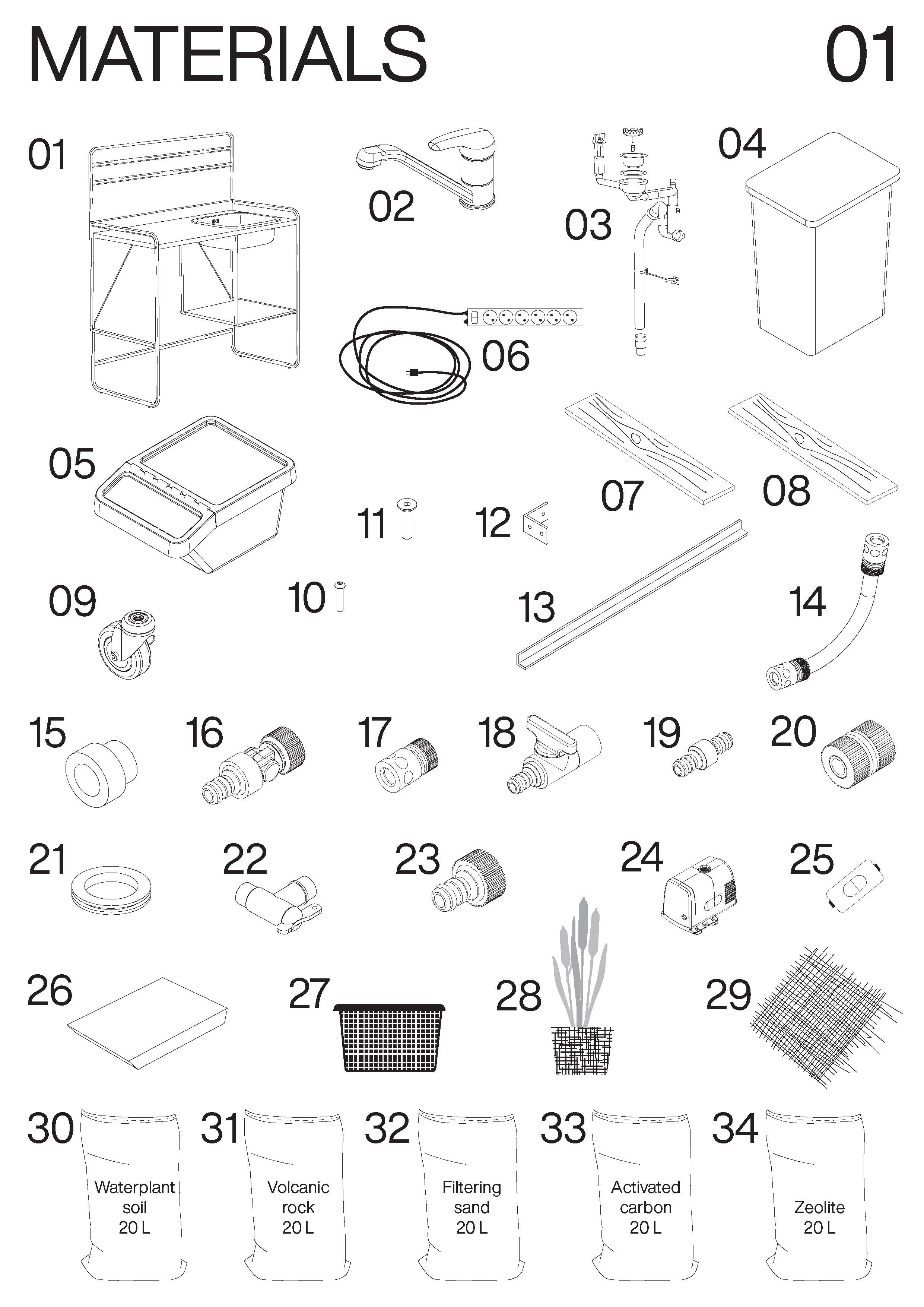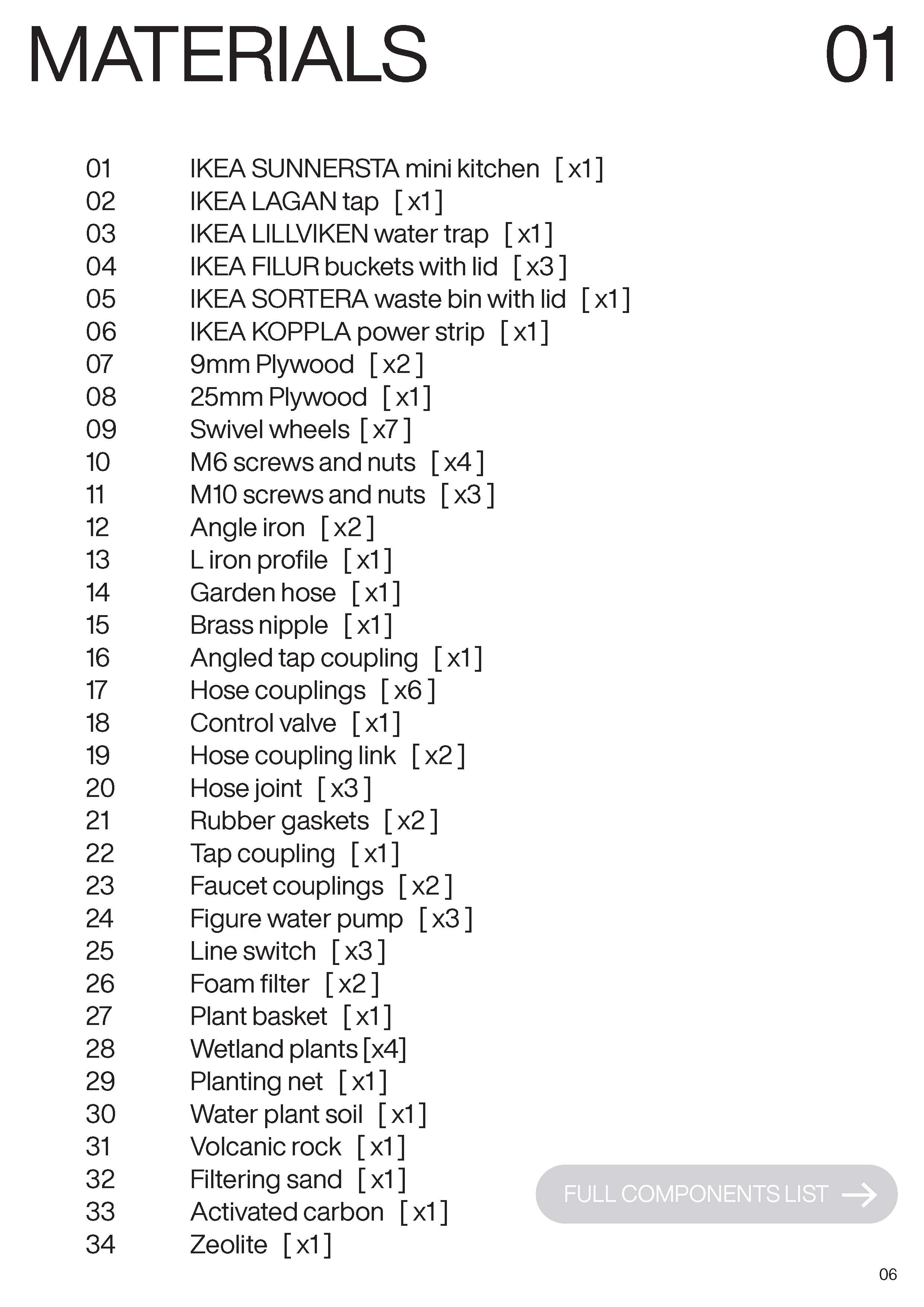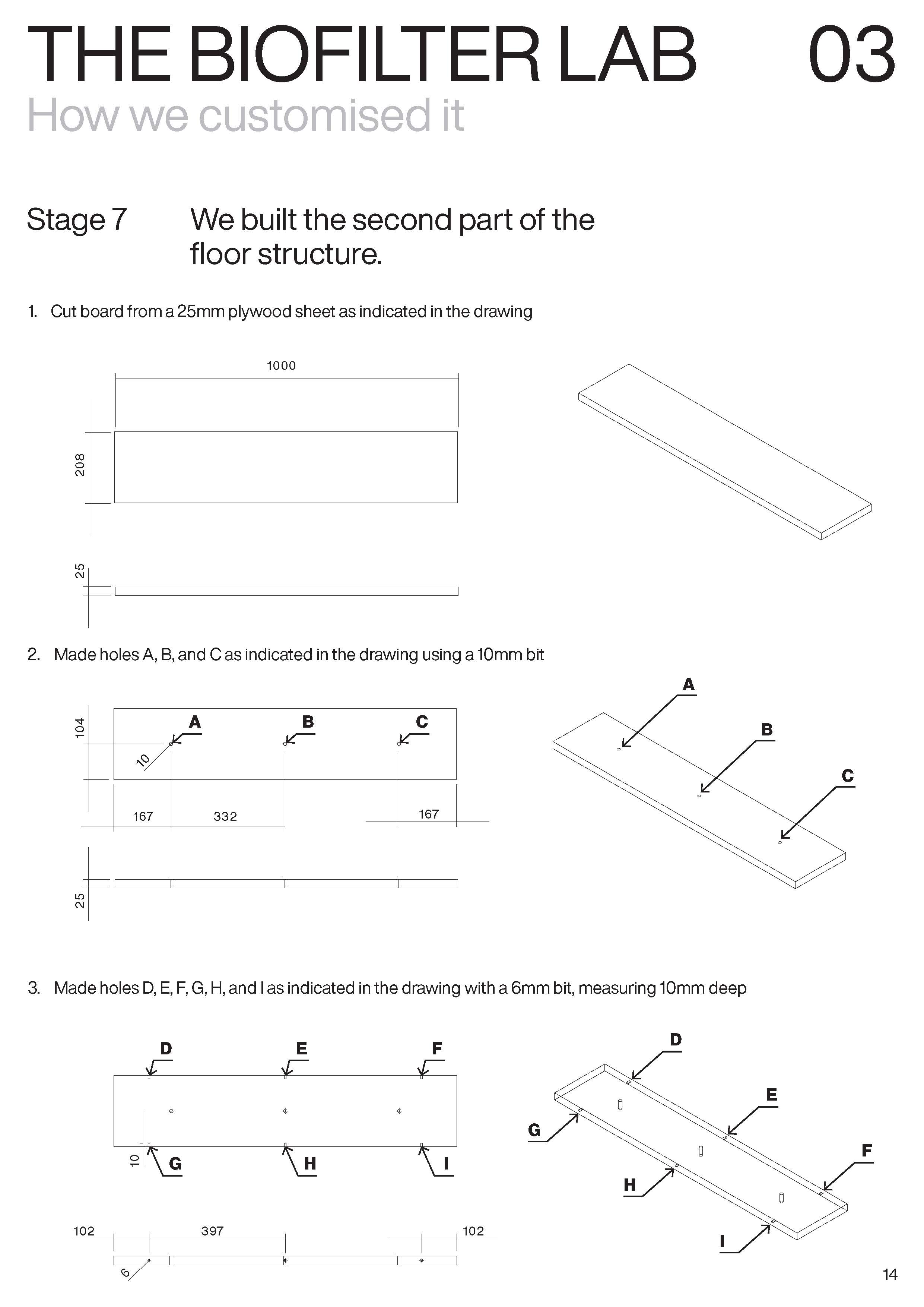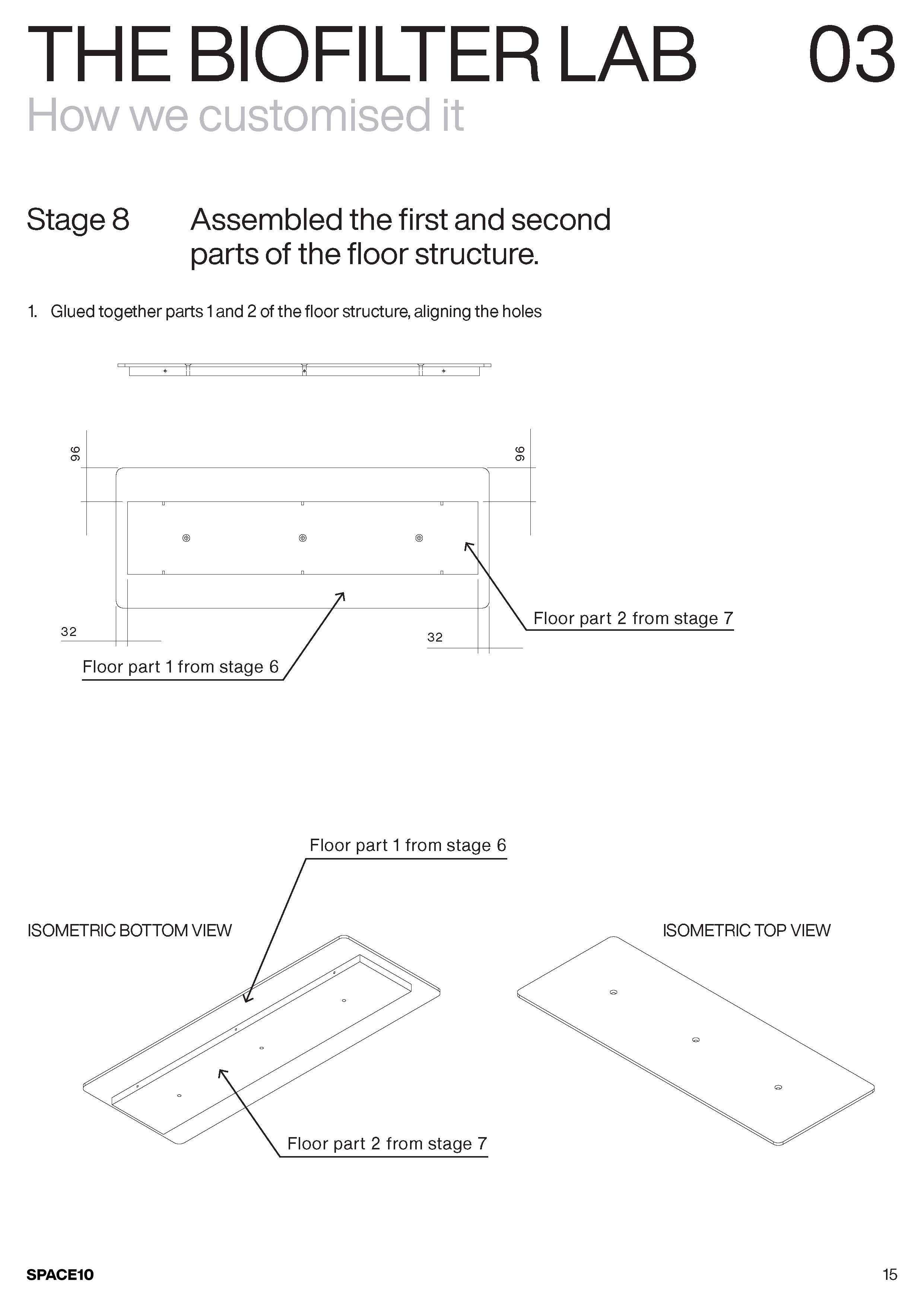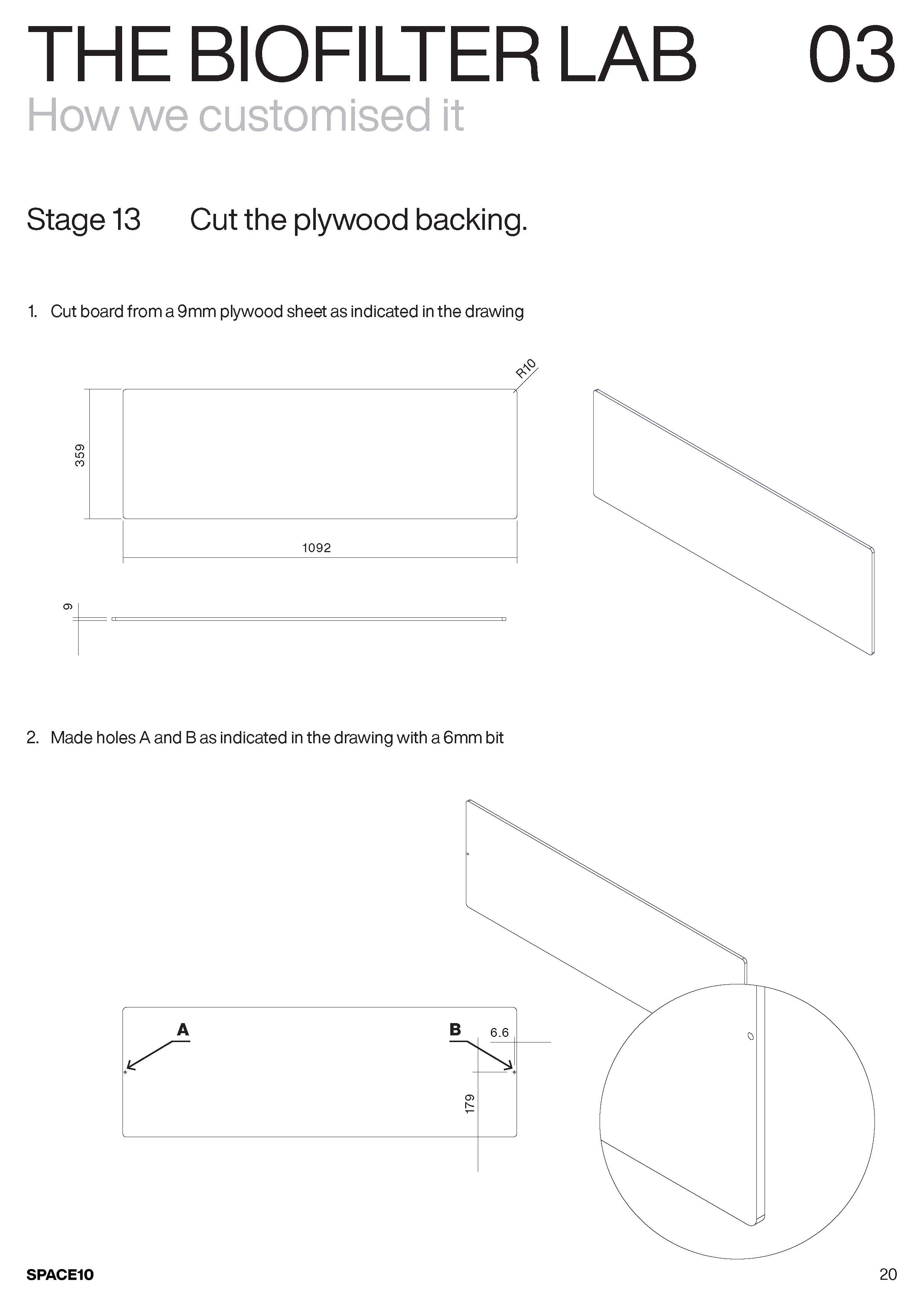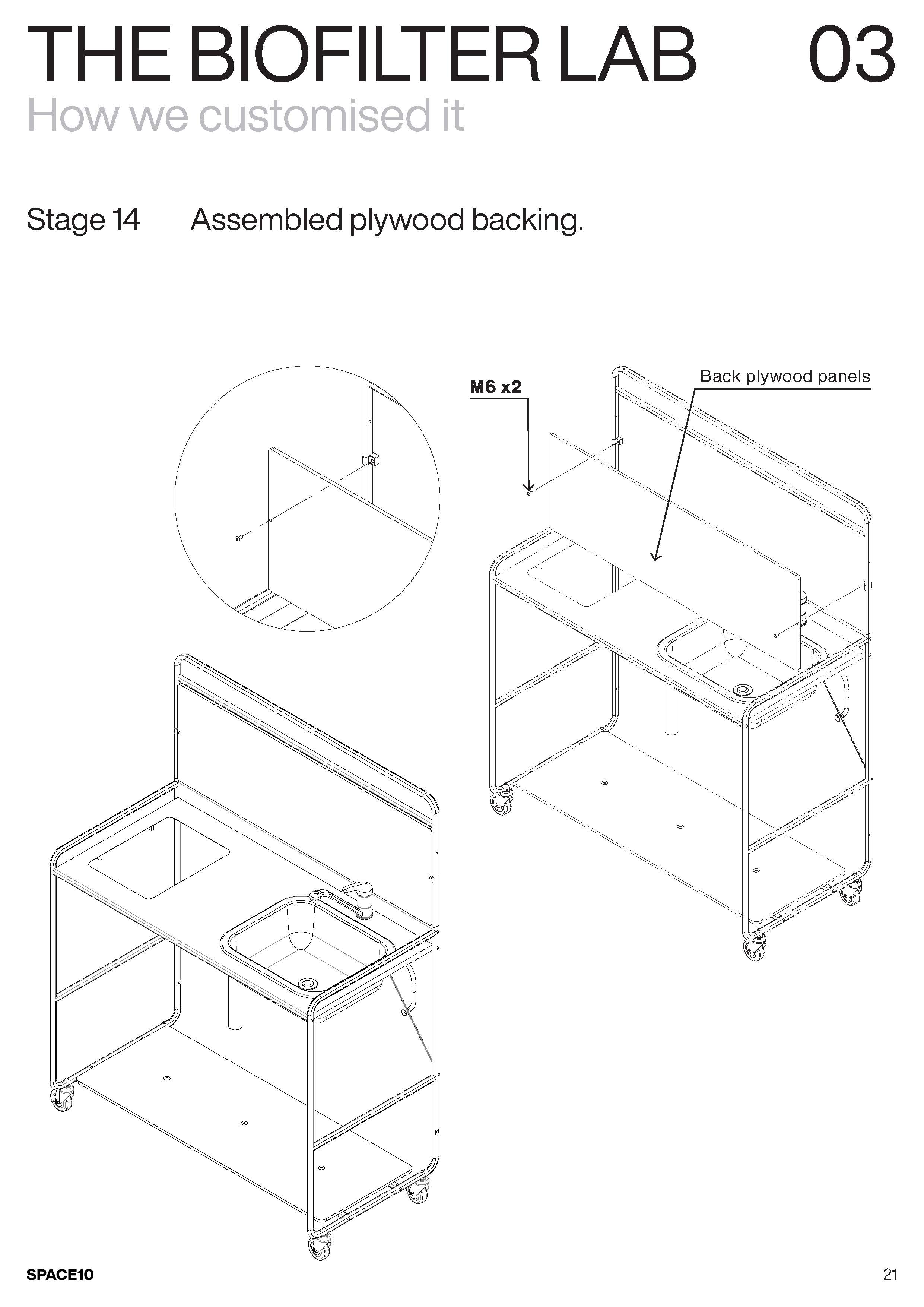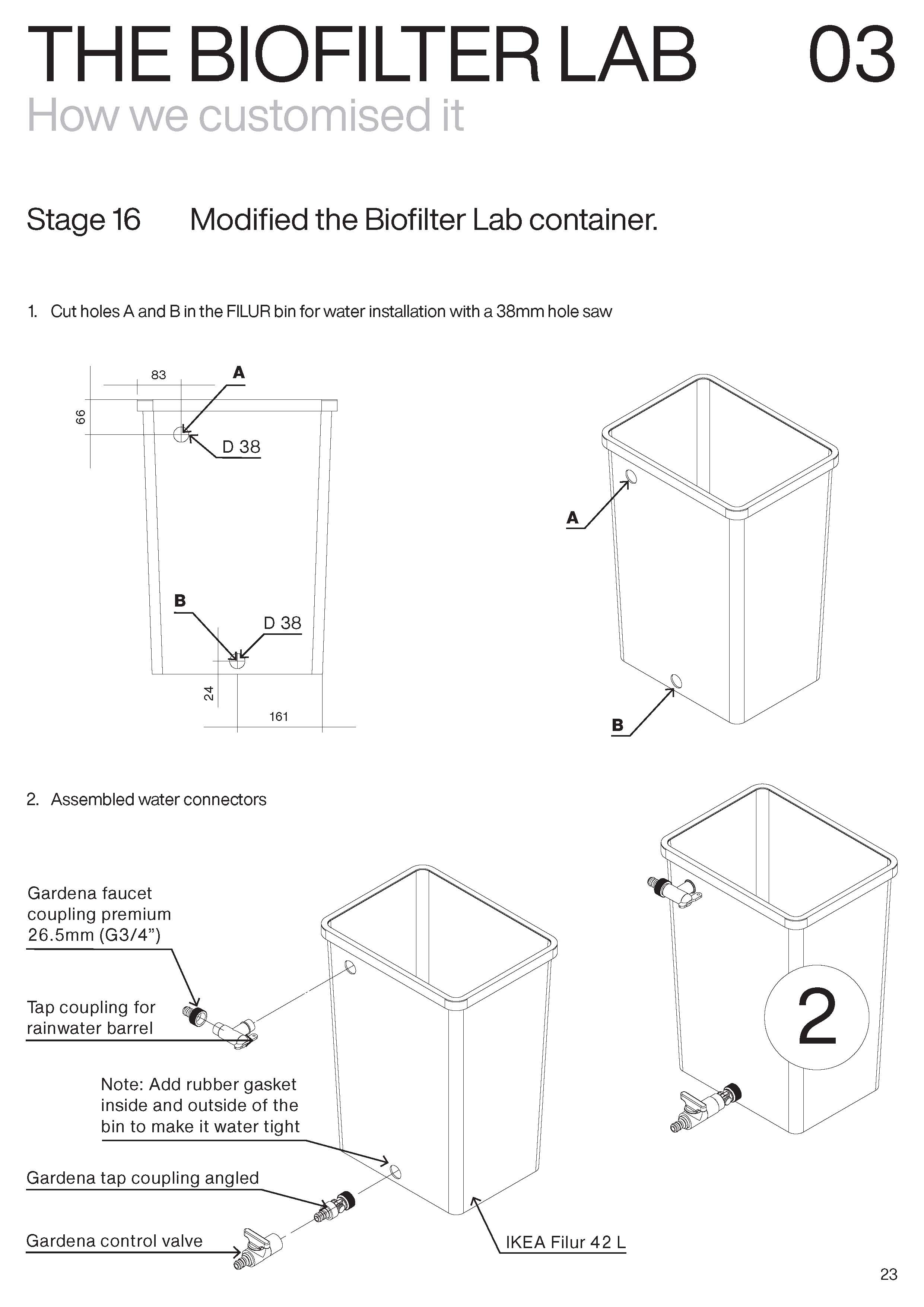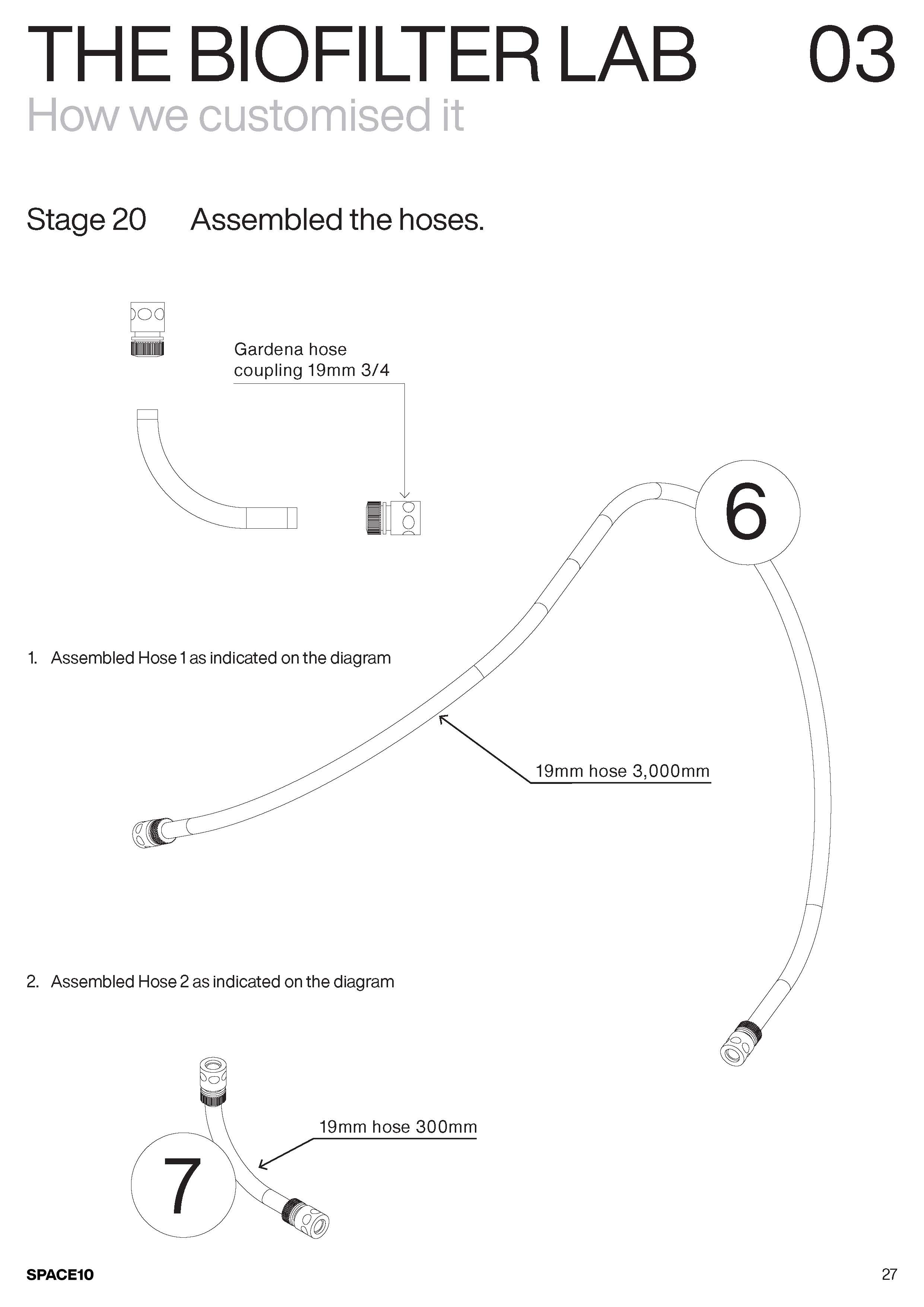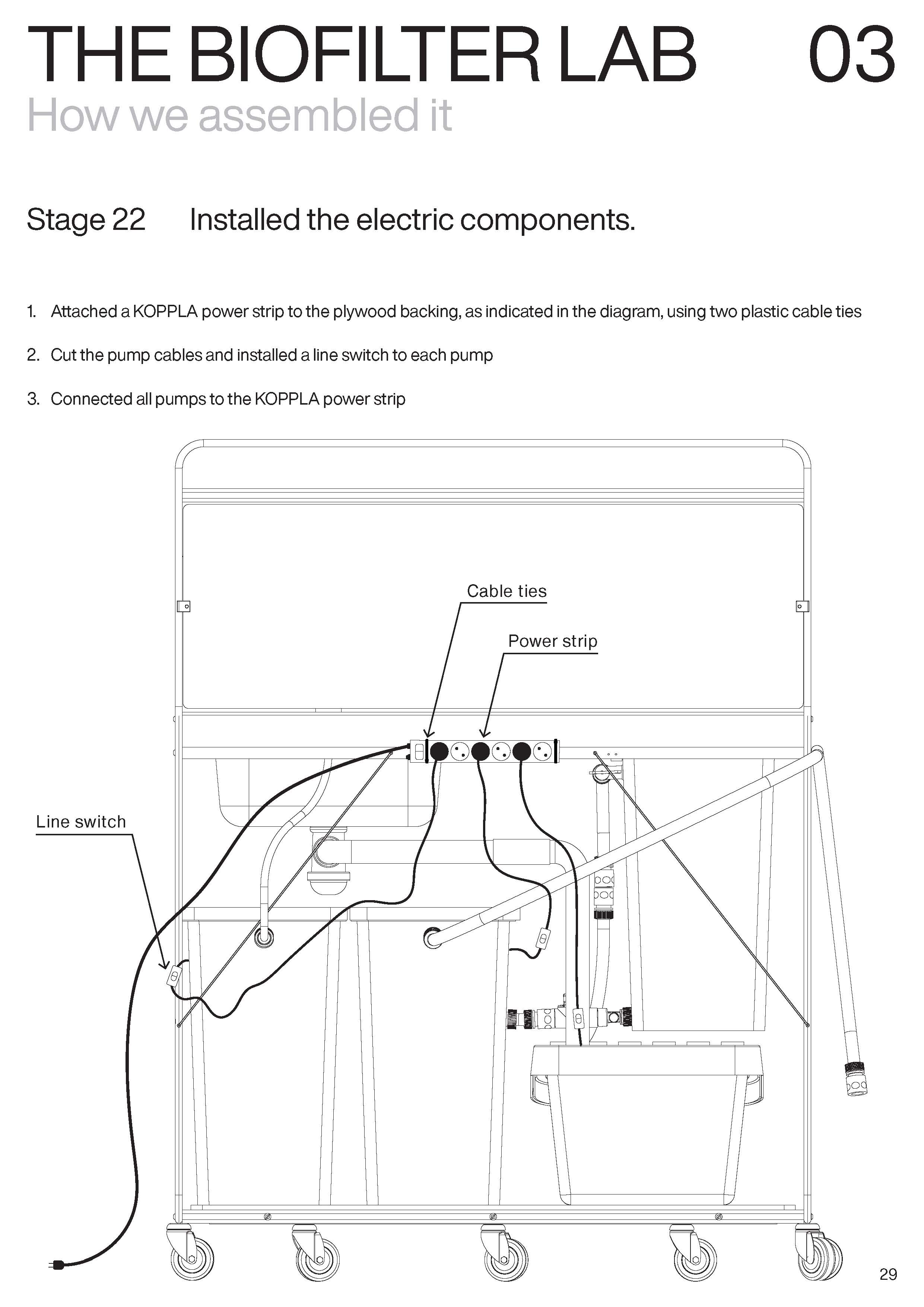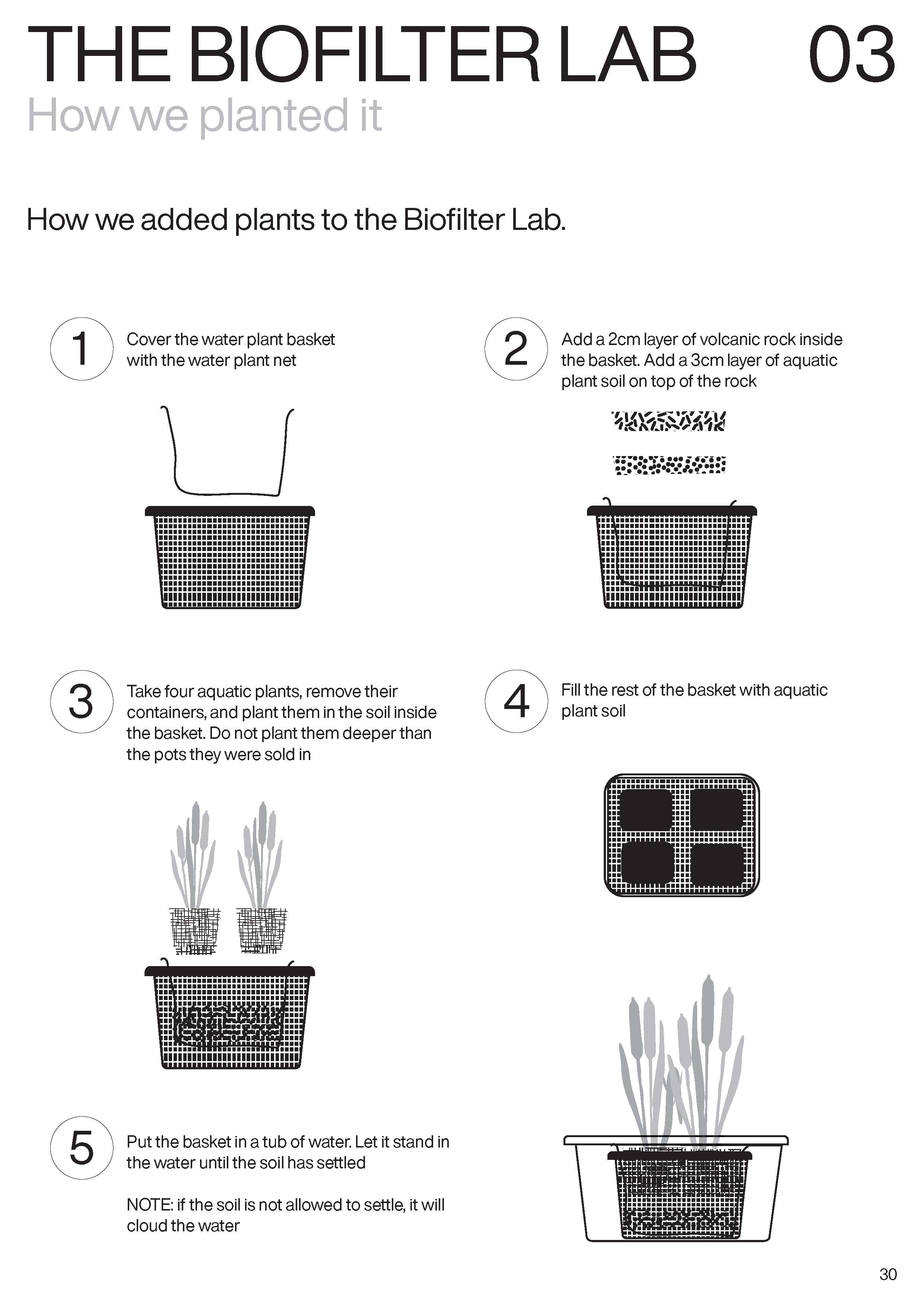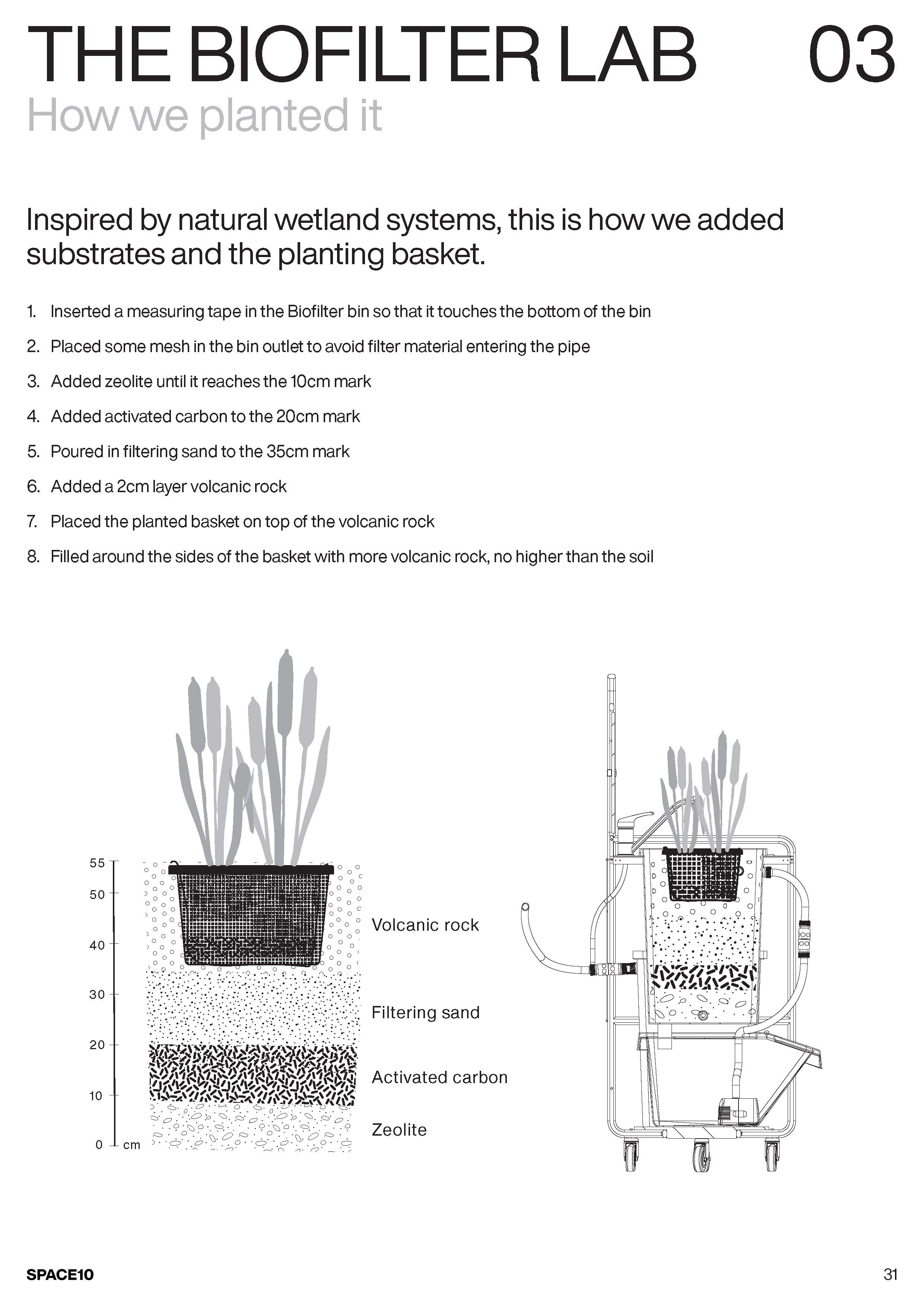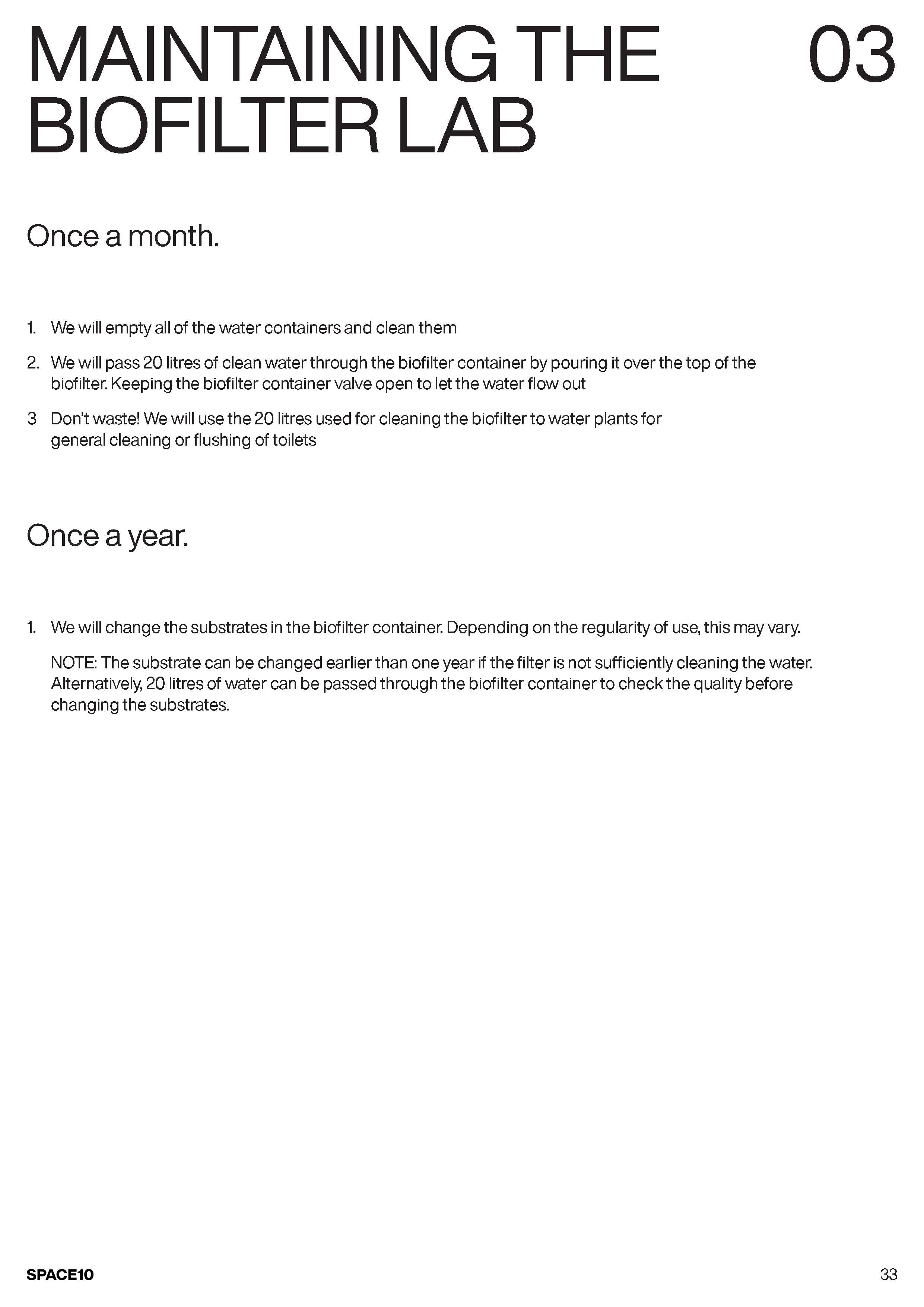Biofilter Lab

Photo / Taby Cheng
The world is running out of fresh water. In fact, global demand for water will exceed supply by 40 percent in 2030 under current consumption trends.
This was the impetus for SPACE10 to research water use across regions. We learnt how people are capturing and re-using water, and reducing their reliance on clean water sources.
But what if we make water-saving, filtering, and storage part of our daily routines?
The Biofilter Lab is a prototype hand-washing station with a biofiltration unit that demonstrates the potential of saving and cleaning water at home for secondary use.
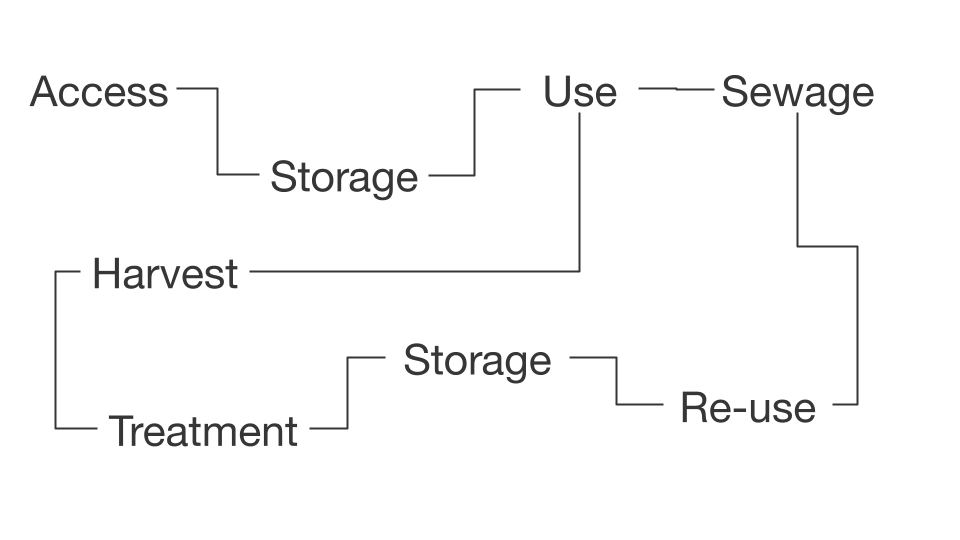
Nature’s way
The Biofilter Lab harnesses nature’s own recipe of capturing and biologically reducing pollutants in water.
It takes inspiration from wetlands, which filter and improve water quality by processing excess pollutants or nutrients found in the water through three processes:
1. Aerobic and anaerobic bacteria living in the root systems of wetland plants help to oxygenate the water and break down chemicals and pollutants into less harmful compounds.
2. The plants use nitrogen and phosphorus from the water as nutrients, draw up through their roots.
3. Water is also filtered through substrates such as sand, gravel, activated carbon, zeolite, and volcanic rock
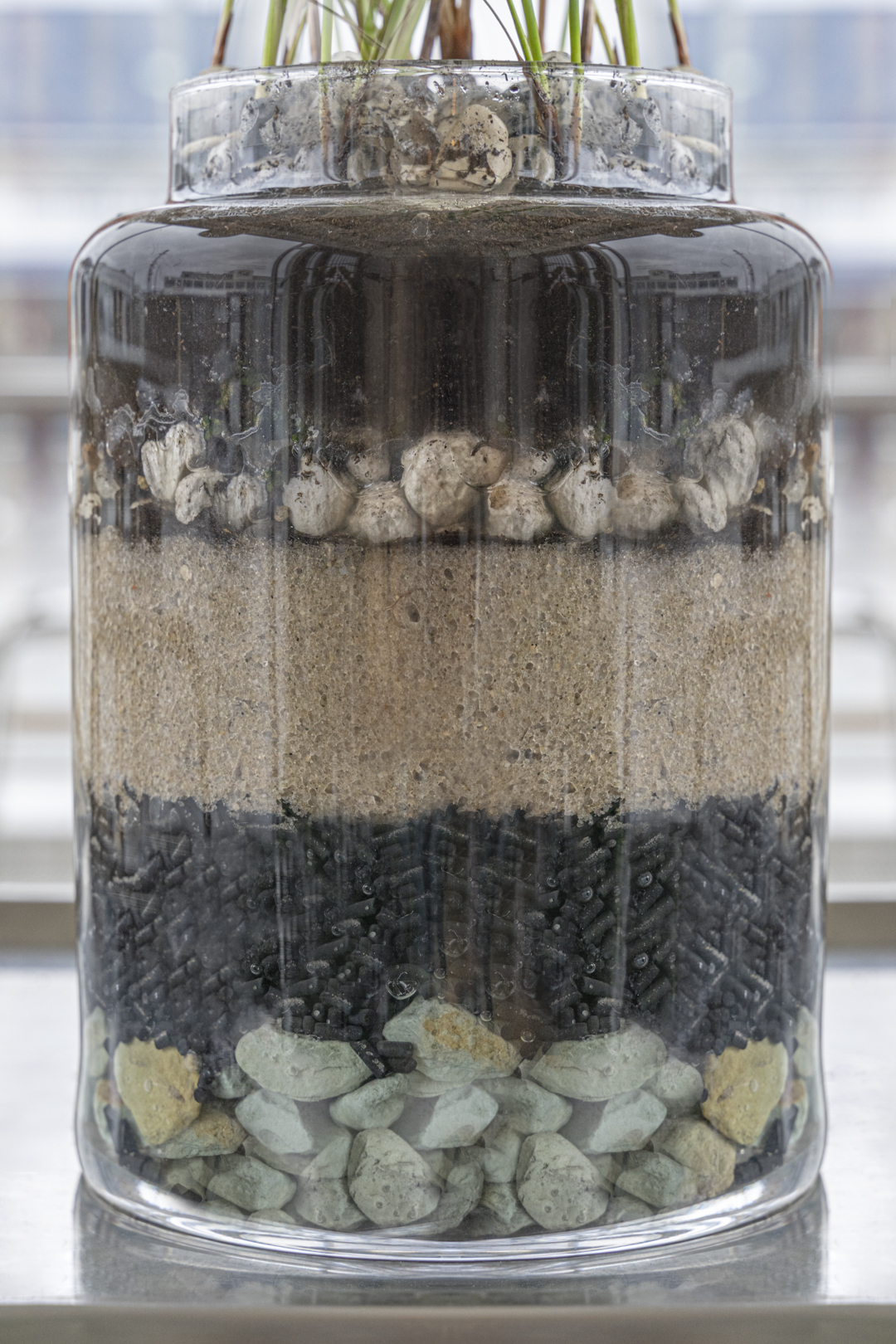
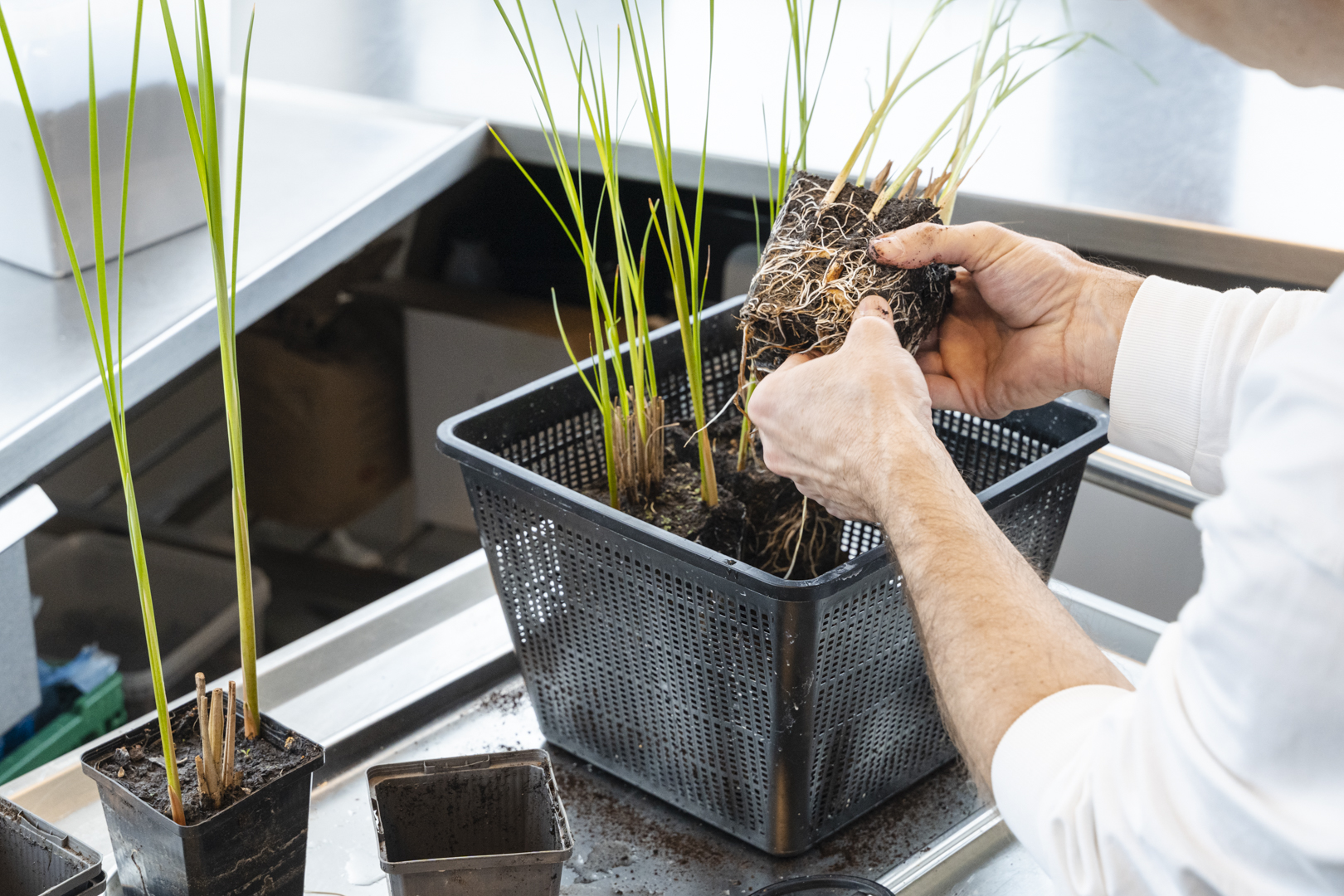

For several months, we used the Biofilter Lab at SPACE10’s Copenhagen HQ for hand washing, using the filtered water to mop floors and water our office plants

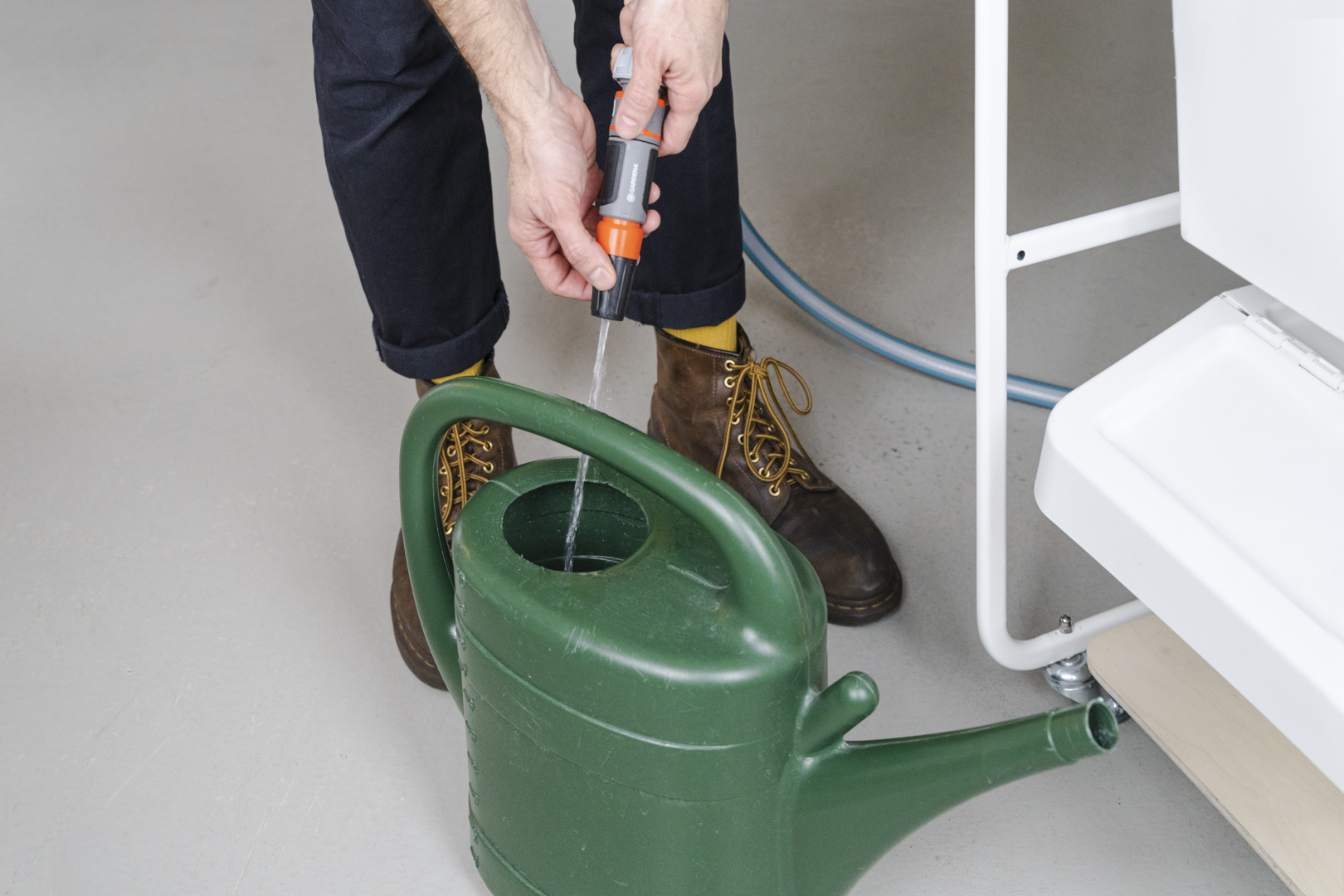
This entire system is disconnected from the water grid, operates using integrated water tanks, plants, and substrates, and was built using standard parts and
apparatus.
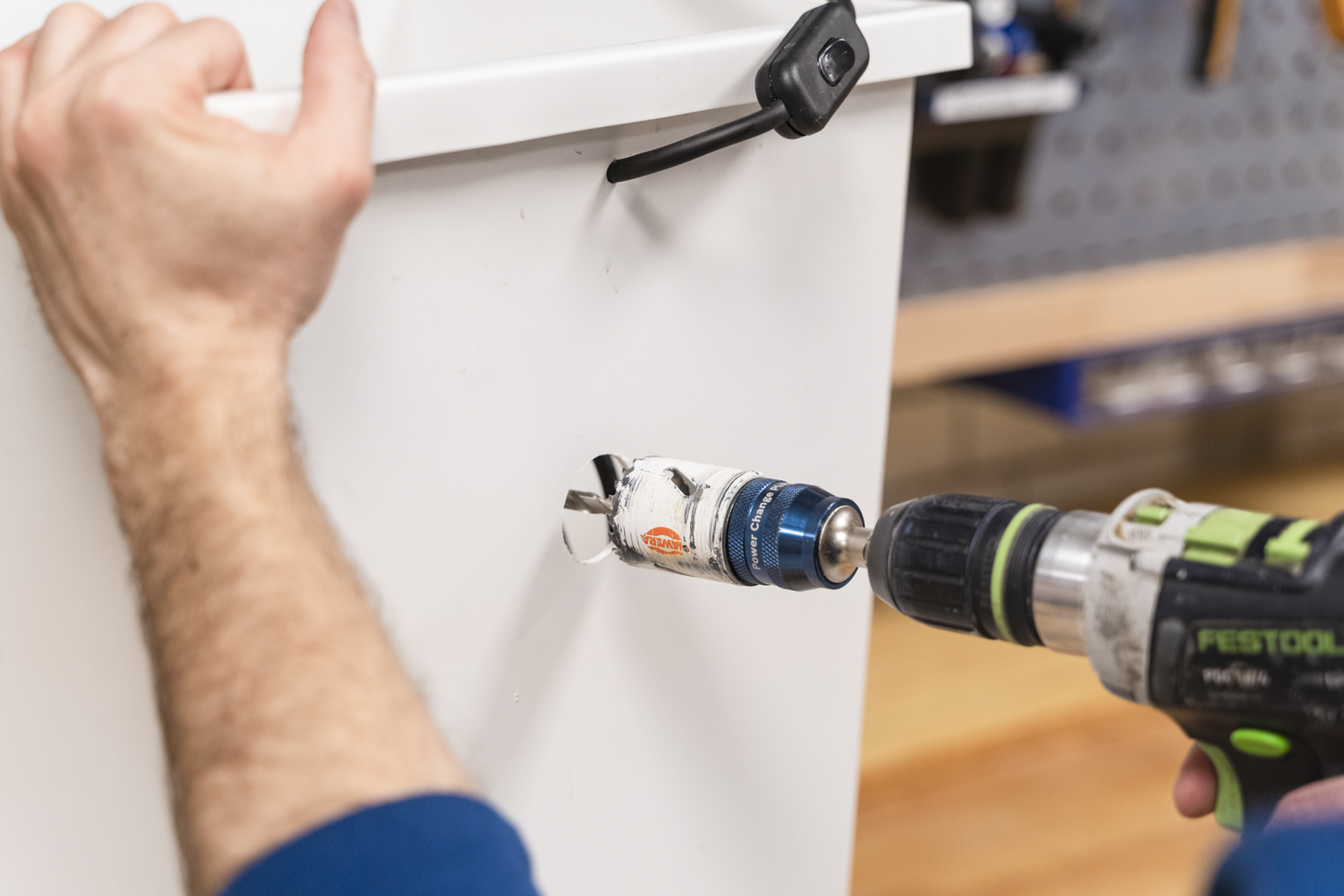

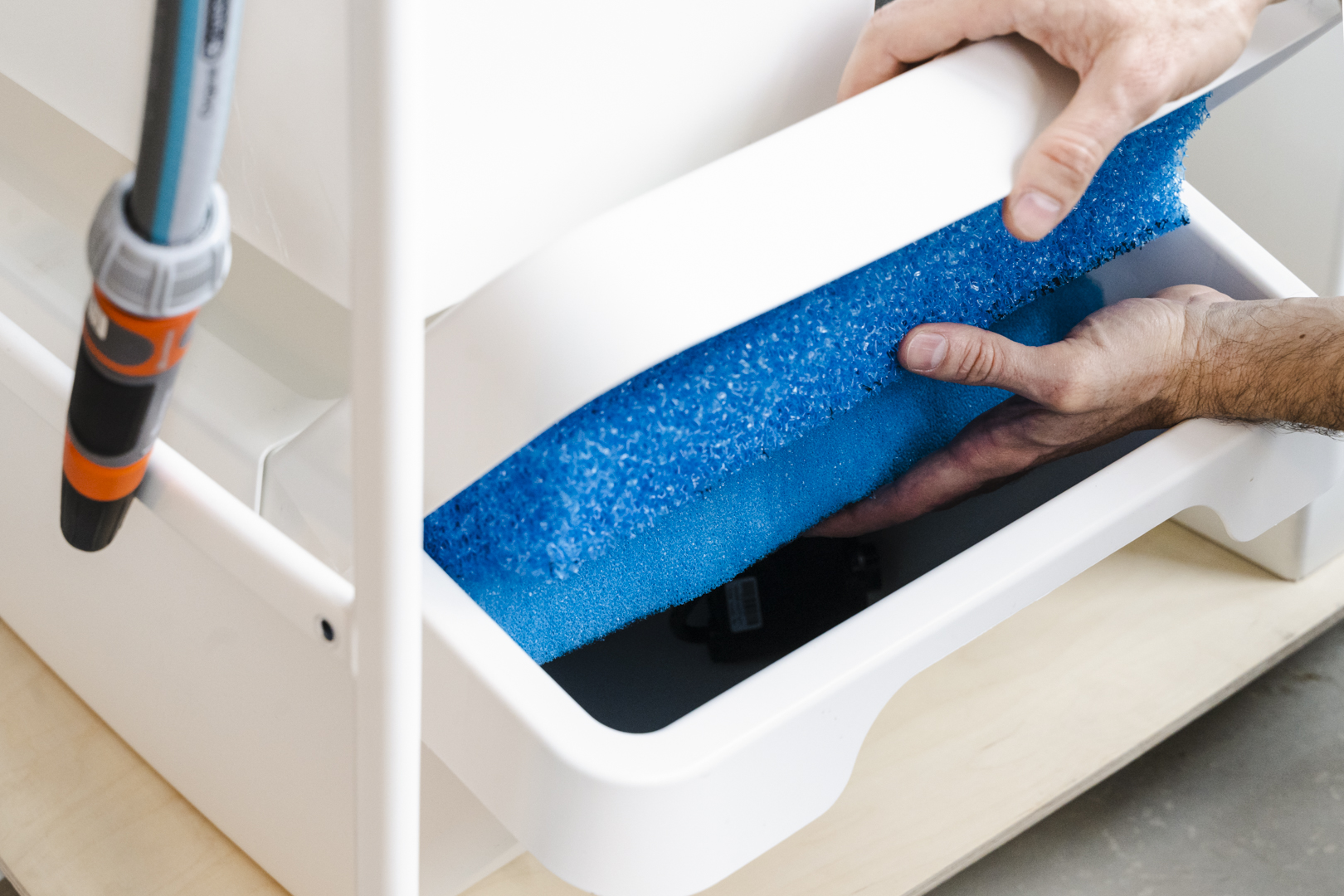
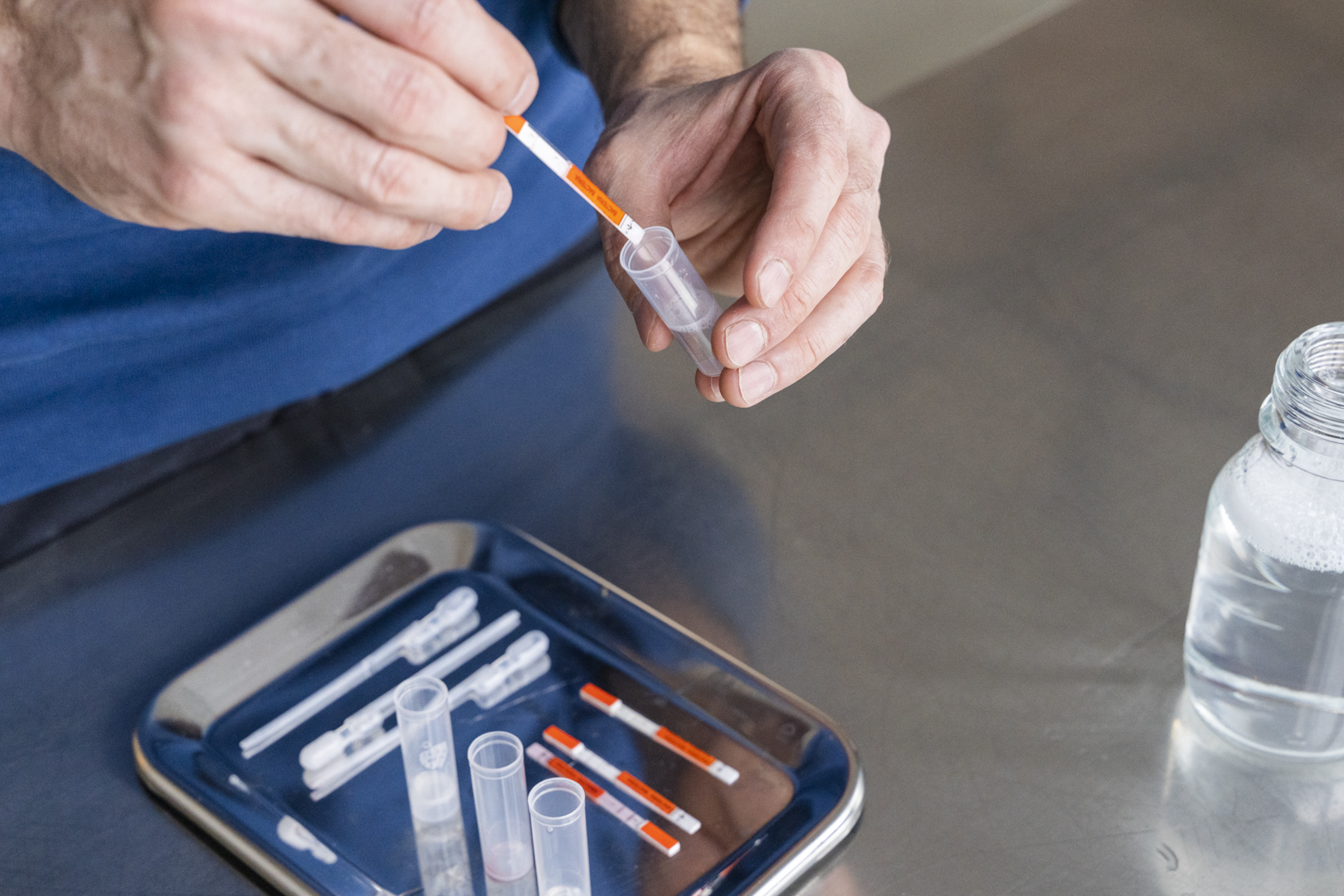

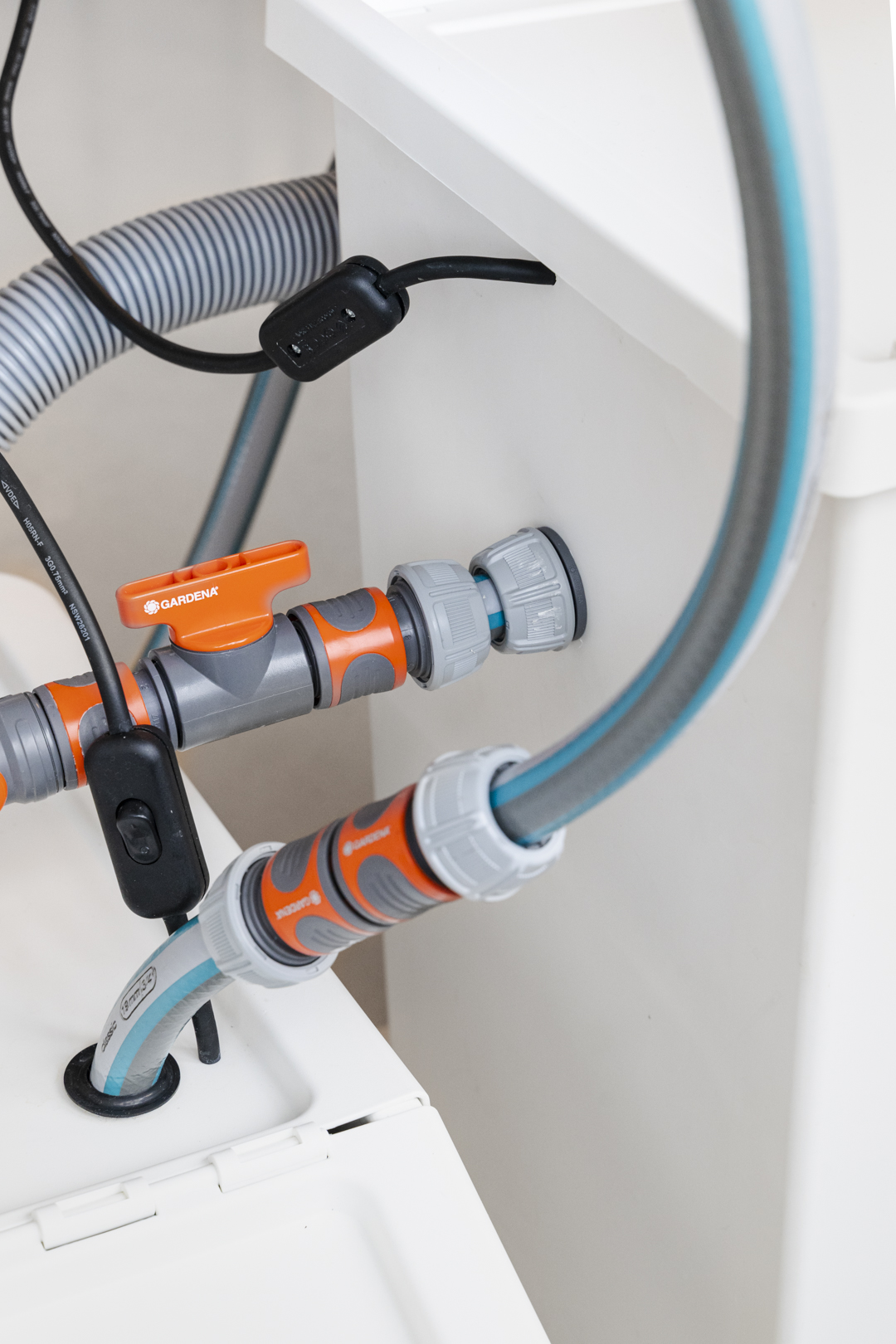
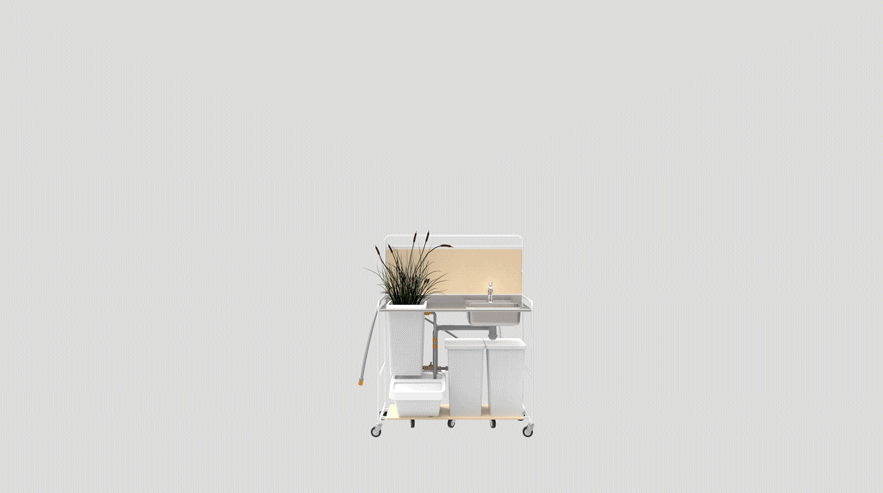
Project owner / SPACE10
Photos / Taby Cheng
Photo art direction / Virginia Lui
Copy / Kathryn Bishop / Lindsey Rendell
Graphic design blueprint / Robyn Collinson
Design and Prototyping / Esteban Gomez
Ilustrations and renderings / Esteban Gomez





